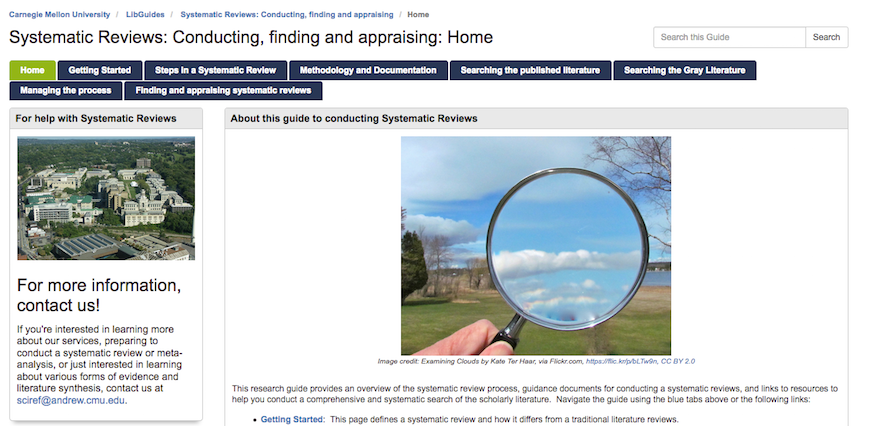
If you're conducting a comprehensive literature search, perhaps for a dissertation literature review or a grant proposal, how do you know when you've done enough? This is a common question and there's no simple answer. However, there are some methods that can help you feel more confident that you've done your due diligence and that other researchers can pick up where you left off if need be.
Systematic reviews, and other emerging forms of research synthesis, use methods of literature searching that reduce bias, and add transparency and reproducibility to the search process. Systematic reviews seek to answer a well-defined research question using the existing literature as the underlying subjects of study. They may or may not involve a meta-analysis, and unlike typical literature reviews, systematic reviews include a study quality assessment phase. This method emerged in the 1970s and 1980s in clinical medicine to answer questions of effectiveness of clinical treatments and to identify evidence to inform clinical practice. With the increasing deluge of information and a push for evidence-based practice, systematic review methods are now being applied in a broad range of disciplines from environmental science to criminal justice. Systematic reviews can help determine if sufficient research evidence exists to support a particular practice or policy, or to identify gaps of insufficient evidence where additional research is needed.
Systematic reviews typically involve a multi-researcher team and can take many months to perform, as they seek to find every study, published and unpublished, that provides evidence to answer the research question. Organizations like the Cochrane Collaboration for health and medicine and the Campbell Collaboration for various social science disciplines, produce and disseminate systematic reviews and provide methodological guidance. The CMU Libraries also has a comprehensive research guide about both conducting and using systematic reviews for decision-making. With the evolution of systematic review methods in other disciplines, a number of emerging evidence synthesis methods are being applied--things like rapid reviews, systematic maps and meta-narrative reviews are a few examples.
While you may not be ready to embark on a full systematic review, the search methods applied in this process can be useful in other types of literature reviews. Structured searches across multiple databases, that make use of database indexing, syntax and keyword searches, can allow for a more comprehensive and reproducible process. The documentation and reporting of searches can add transparency. And the use of citation management tools like Mendeley or Zotero, and screening tools like Rayyan and abstrakr, facilitate the screening process and help you organize your work.
If you're thinking about conducting a systematic review or think that these methods can help you do better literature reviews for dissertations, grant proposals or meta-analyses, please join us for a workshop on April 13th. You can also submit a query at this page for help with a systematic review or a comprehensive literature review.
An introduction to systematic reviews: Finding research evidence for decision-making
12:00 - 1:00 PM
Hunt Library, IDeATe Studio B
Register at: https://cmu.libcal.com/event/3921853
by Sarah Young, Liaison Librarian
